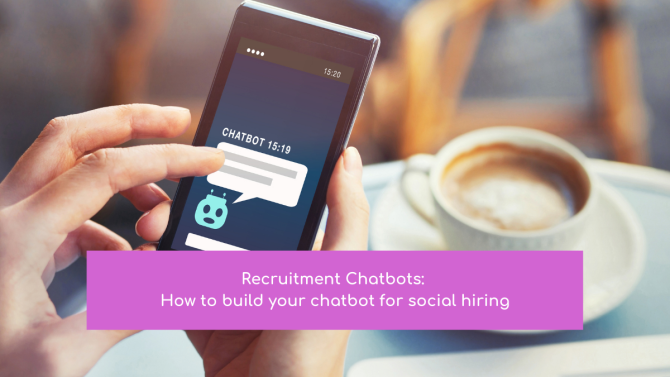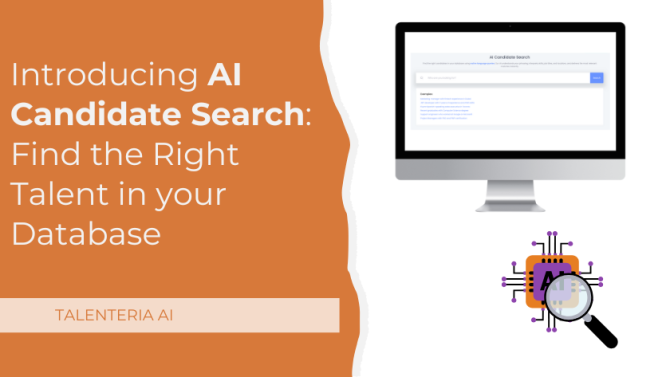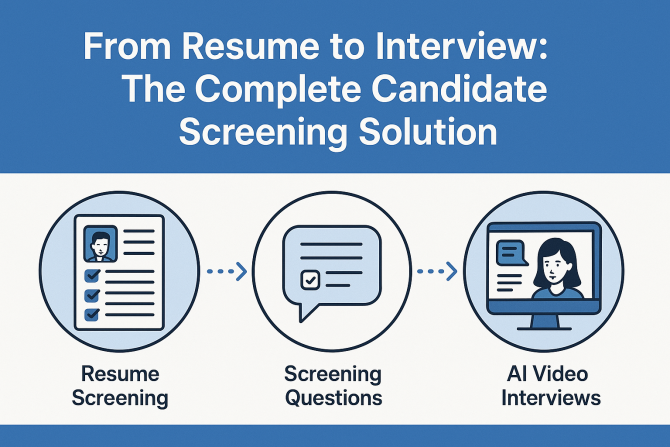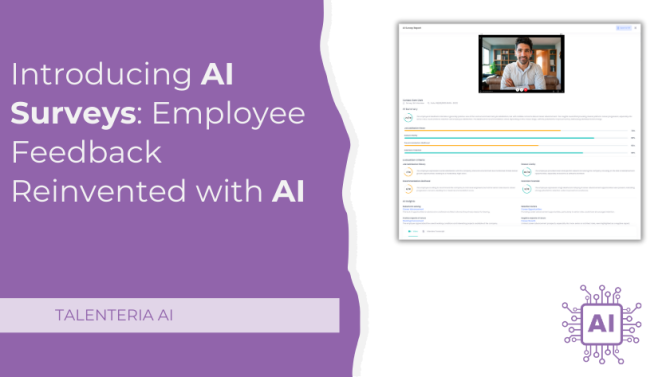
It is predicted that the global chatbot market will triple by 2024: from $2.6 billion to $9.4 billion. This is outstanding, but expectable - leaders all over the world have reported that chatbots have helped them to increase their sales by as much as 67%. With their help, you can automate recruitment, optimize teamwork, or train individual members.
We’re going to have a closer look at recruitment chatbots: how do they work, what do you need to configure such software, and how to utilize it to gain profit?
What are chatbots?
The recruitment and staff management processes are some of the most complex tasks that any specialist working in the HR department has to face every day. Recruiting new workers is a time-consuming process that takes away the resources that could have otherwise been spent on more important tasks. It was with this in mind that the first chatbots for hiring were created.
It takes days, and sometimes even weeks, to review resumes for each job position, and all to find a single employee for the company. How can a chatbot help with this? This software, based on artificial intelligence technology, is capable of learning and self-development. Such systems can view hundreds of CVs in minutes. They are also used in staff management systems, to help new employees integrate with the team and simplify the process of handling paperwork.
In general, there are a lot of recruiting tasks that chatbots of our generation can handle.
Such bots can work around the clock, ensuring the selection of candidates even after hours.
Underlying the huge demand for chatbots
Recruitment chatbots are a part of the routine for many HR agents when it comes to both recruiting new staff and creating a friendly atmosphere in the team. In 2020, the chatbot market is estimated to be valued at $4.6 billion as opposed to $2.6 billion in 2019 - already a dramatic rise. More businesses are now after chatbots for hiring because they minimize the time spent doing admin tasks.
The selection of candidates is a complex process that involves hours of reviewing CVs, selecting suitable candidates, contacting them and scheduling interviews. Just imagine that this area of work is completely automated and you only have to deal with those candidates who meet all the requirements for the job position - a reality for businesses that have already implemented chatbots. They can even schedule interviews automatically after a potential employee has completed a survey, giving HR managers the space to work on other tasks.
Top reasons why you need a chatbot
The first, perhaps the most important reason, is the improvement of the company's image. It’s rare to find an IT specialist who prefers to work on an old computer than a new generation MacBook - same goes for office jobs. The overwhelming number of candidates applying for a single position means that each of them will wait for days until they hear back from the company. Naturally, they would rather pass a quick survey in a chatbot than wait for a recruiter to take care of their case.
The chatbot will be useful to the recruiter as well as its future employees that are now out job-hunting. They will be drawn to the company that follows the latest trends - it creates a positive, outgoing image of a business that is up to date with technological advances.
Chatbots can massively reduce your expenses. How many people do you need to view a hundred resumes? How long will they take? Take their wages into account. In contrast, having spent one time on a chatbot and having learnt how to maintain it, you can get rid of this problem once and for all to optimize the company's resources.
This applies not only to small companies but also to giants of hiring automation, such as:
- Amazon;
- Google;
- Sony;
- HP and many others.
Another reason to use a bot is if you want to reduce the number of calls and messages to the company, making the job easier for your staff. Answering questions is one of the primary tasks of a chatbot. You can customize it so that it resolves basic problems, addresses customer complaints, sends links, and so on.
The 3 main details that a chatbot pays attention to are:
- The position for which the person applies;
- Location;
- Compliance of a person with the corporate values of the company.
Thanks to this, the chatbot is excellent not only for recruiting staff - it can also reveal the potential a candidate might have.
Pros and cons of implementing a chatbot
Although the list of advantages is huge, we will focus on the most important ones:
- А chatbot is a high-tech software that can go as far as registering the emotions of the person it is communicating with and respond to them based on their tone. This is possible because of the built-in scripts that enable the chatbot to learn. So if a human reaction is needed, the chatbot can easily handle this task. If the candidate asks a question to which the chatbot does not have an answer, it will ask you to rephrase it.
- Chatbots make working with foreign specialists easier than ever before. They can use many languages, automatically translate CVs and all the data received from the applicant. This makes the task easier for the specialist who makes the final decision on the fate of the potential employee.
- Hiring software easily identifies slang, jargon, and a variety of communication styles.
- It automatically collects all the analytics received during the applicant’s interaction with the bot.
- It can generate reports about itself.
During operation, the chatbot collects data from hundreds or even thousands of people. It collects absolutely everything: from name to address of residence, social status, and so on. By itself, a chatbot can not disseminate this information in any way, unlike a person. This brings us to the first con of chatbots: this data can be decrypted by hackers. Once in their hands, it is impossible to predict how it will be used.
There were several cases when hackers managed to reconfigure the chatbot. This is a very complex and long process, which consists of repeating specific answers. Not everyone can do this, but you should be aware of this possibility.
The biggest disadvantage of HR chatbots is that they cannot make the final decision. Yes, they can analyze and collect information from every source many times faster than a human being. However, this software can’t be entrusted with the decision-making process. Besides, because they react to emotions and can learn, they can be easily manipulated.
How to build your chatbot for social hiring
To maximize the usefulness of a chatbot, you must customize it to the needs of your company. Let's look at the setting using the example of the Facebook chatbot for HR:
- Enable automatic replies. For each message the answer will be different, creating a “real person” feeling and making the candidate feel more comfortable.
- There is a dedicated menu where you can add various criteria by which an employee is selected. Set up the keywords you’re looking for, work experience, education and skills.
- Add a questionnaire to the chatbot. This will help weed out unsuitable candidates to optimize the work of HR specialists. It means that the recruiters will receive CVs from the best candidates for the position, which makes their job easier and significantly improves the quality of the entire organization.
- The bot can be configured in such a way as to refer any complex questions that it can’t answer to an operator. This tool is useful if a person has more personal, in-detail queries about a job.
- You can make sure that a suitable candidate is immediately displayed on the recruiter's monitor and available for processing, so there is no need to waste extra time.
- Finally, you can monitor the integrity of the recruiter themselves and be fully confident that not a single candidate is left without due attention.
Recruitment marketing is a huge niche that does not stand still, so it's time to introduce new trends to your company. If you have such an opportunity, you shouldn't hesitate to try this contemporary trend. You will benefit immensely from this one-time investment.





